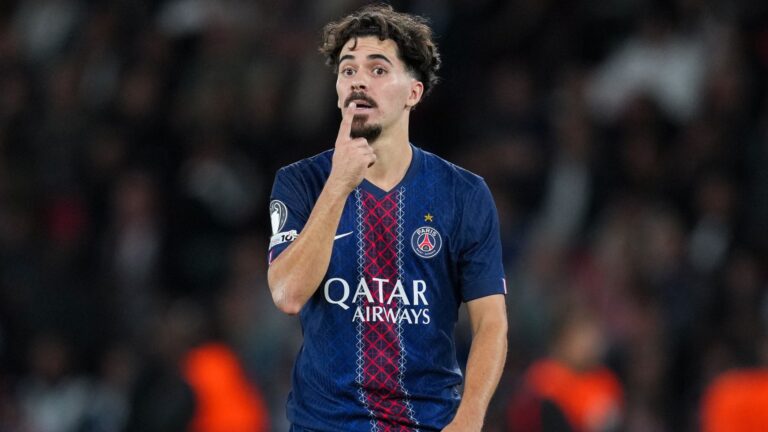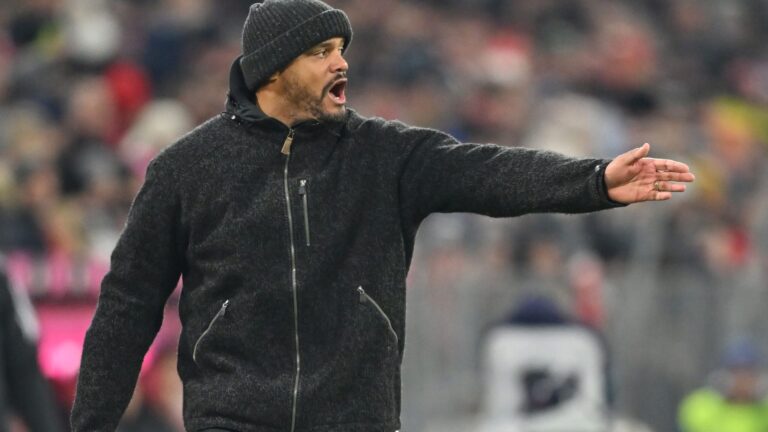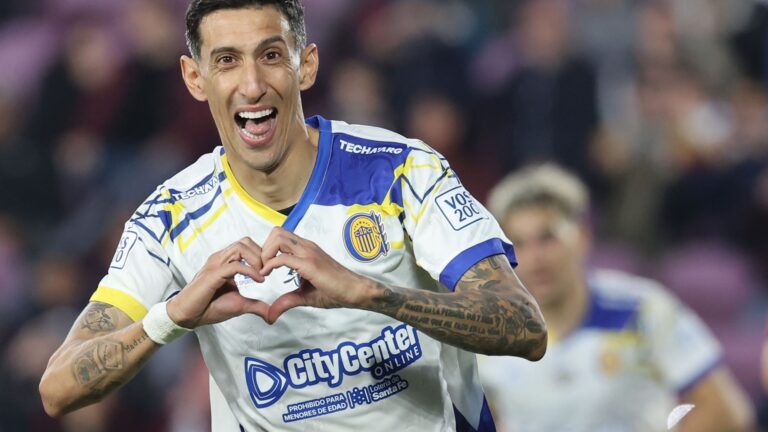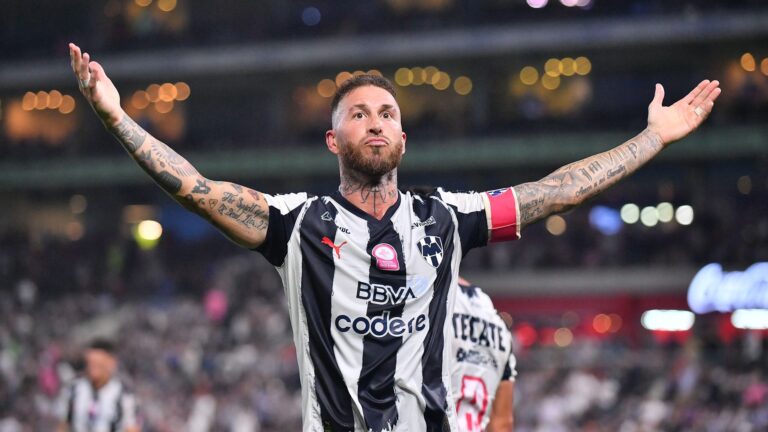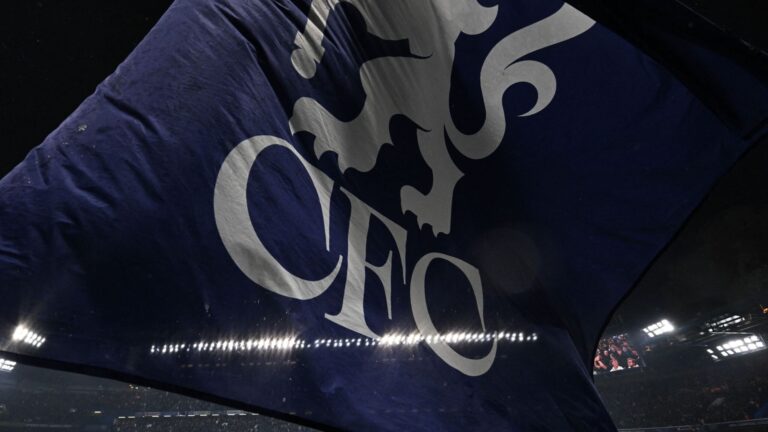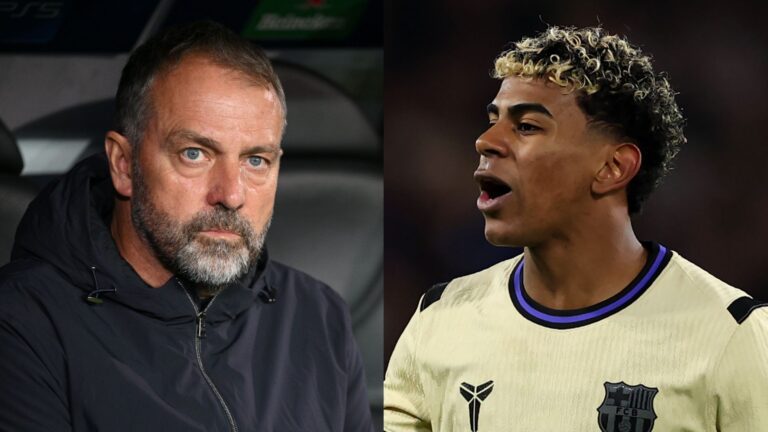Unleashing Fan Fury: The Bold Shift in Borussia Dortmund’s Away Kit Design
Discover how Borussia Dortmund‘s groundbreaking away kit has triggered a storm of disapproval from loyal supporters, emphasizing the profound bond between fans and the club’s storied traditions. As commercial forces reshape football, this year’s bold redesign has sparked outrage for moving away from iconic elements, pushing enthusiasts to demand the revival of the classic black and yellow aesthetics. Polls reveal that over 70% of fans engaging on social platforms favor enduring styles, spotlighting the perpetual struggle between fresh ideas and revered heritage in today’s sports merchandising.



Debut of the Disputed Kit and Rising Fan Discontent
In Borussia Dortmund’s recent 2-0 triumph against Heidenheim on Saturday, the debut of their updated away attire failed to ignite excitement, replaced instead by waves of criticism from the crowd. Supporters, deeply invested in the team, unfurled large banners denouncing it as “the least thoughtful in the Bundesliga,” while pre-game chants urged a return to the familiar black and yellow tones. Since its announcement, the kit’s pale gray base with bright neon accents and bold red Vodafone logo has drawn heavy online scrutiny, as critics claim it erodes the club’s deep-rooted identity and community essence.
Reasons Behind the Strong Fan Reactions
To many devotees, this kit goes beyond mere aesthetics; it’s perceived as a challenge to the core symbols that represent Dortmund’s enduring legacy. The black and yellow shades aren’t simple colors-they capture the essence of the city’s soul, the team’s rich history, and the lively fanbase that powers the intense atmosphere at Signal Iduna Park. Key fan groups, essential for maintaining the stadium’s dynamic spirit, have raised objections, viewing it as an oversight of their voices under the weight of sponsorship demands and current trends. Insights from recent fan discussions indicate that comparable design disputes at teams like Bayern Munich have prompted reversals, intensifying calls for adjustments among Dortmund’s base.
Official Statements Addressing the Backlash
Managing director Cramer has stepped forward to address the uproar, candidly recognizing the dissatisfaction in public statements. “We’ve taken note of the issues and are making efforts to address them,” he remarked. “In my role, I understand that not all kit decisions will appeal to everyone-it’s a natural aspect of evolution.” This statement reflects the difficulties of aligning supporter desires with cutting-edge designs in a highly competitive environment like the Bundesliga.
Insights from the Director of Sports Operations
Sporting director Kehl provided a nuanced perspective, noting that opinions on jerseys fluctuate each year and seldom reach universal agreement. “Opinions on our kits vary with every season,” he explained. “However, we’re always rooted in the colors that embody our city and team, which appear in most of our creations.” He also highlighted the kit’s on-field effectiveness, adding, “It contributed to our victory in Heidenheim, proving its utility. As a club, we deal with these conversations routinely, but we also aim to attract those who appreciate modern, creative approaches.” Data from the Bundesliga demonstrates that clubs incorporating fan input, such as through joint design initiatives, can boost merchandise revenue by as much as 20%, underlining the advantages of responsive strategies.
Navigating Modern Trends Versus Historical Roots
This episode illustrates the wider tensions between business requirements, partner commitments, and safeguarding the fan-centric culture that Dortmund has always valued. By choosing such a significant overhaul, the club risks straining ties with its most loyal followers, who shape its distinctive charm. Moving forward, specialists recommend blending elements, such as gentle contemporary updates to traditional motifs, to prevent future disputes while broadening appeal.
Future Prospects for Borussia Dortmund Amid the Turmoil
As the controversy simmers, Borussia Dortmund is refocusing on their competitive edge, starting with their Champions League opener against Juventus at Allianz Stadium-a game that could shape their continental goals. Next up is their Bundesliga matchup with Wolfsburg, where sustaining their form will be crucial despite the surrounding issues. Fan attitudes are shifting, as seen in surging social media activity around kit discussions, suggesting the club may introduce modifications to build better rapport.
Context of the Kit Dispute
As one of the Bundesliga’s most ardent clubs, Borussia Dortmund is embroiled in a fiery discussion over their newest away kit, with fans voicing frustration online and in the stands over its divergence from the signature black and yellow palette. This uproar emphasizes the intense emotional links between followers and team imagery, a frequent dynamic in European football.
The kit features non-traditional patterns and hues that detractors say weaken Dortmund’s distinctive persona. Terms like “Borussia Dortmund away kit controversy” are surging in online searches, mirroring broad fan dissatisfaction. Based on insights from outlets such as ESPN and official Bundesliga reports, the design drew from evolving sports fashion trends, yet it hasn’t connected with audiences, showing how uniform choices can influence allegiance and participation in the Bundesliga.
Effects of Fan Demonstrations
Supporter actions have intensified rapidly, involving organized slogans, placards, and boycotts at games. For instance, during Dortmund’s encounter with Bayer Leverkusen, attendees showed banners proclaiming “Hold to Our Heritage” and opted out of wearing the new kit. These efforts highlight the influence of fan input in elite football, where collective participation is vital.
At their core, these protests address more than visuals; they focus on upholding club traditions. In the Bundesliga, where fan traditions are highly regarded, such matters can impact crowd sizes and product sales. Notably, queries for “Borussia Dortmund fan protests” have risen sharply, signaling increased scrutiny on how teams manage pushback. The campaign has fueled conversations across social networks, with tags like #BVBKitBoycott spreading the message worldwide.
The Club’s Commitment to Fixing the Problem
Facing escalating demands, Borussia Dortmund’s leadership has vowed to reexamine the away kit. Executives, including CEO Hans-Joachim Watzke, announced in a statement their dedication to “hearing our fans and implementing required changes.” This commitment encompasses possible alterations for future seasons, stressing cooperation with supporter communities to ensure designs match Dortmund’s principles.
This move represents progress in Bundesliga fan dynamics, demonstrating how organizations can evolve based on input. By confronting the “away kit controversy” directly, Dortmund is offering a model for others in preserving community bonds. Responses from fans are varied, with some valuing the openness while others seek tangible updates.
How Fan Involvement Shapes Football
Effectively connecting with fans can yield key advantages, including enhanced brand devotion and higher earnings from apparel. For Borussia Dortmund, tackling this kit matter could improve overall satisfaction and increase attendance at Signal Iduna Park. Perks include building a stronger community feeling among backers, potentially leading to greater involvement and favorable endorsements.
For teams dealing with comparable issues, here are useful approaches to handle conflicts:
- Run early fan polls during design stages: Collect opinions on concepts to head off unexpected backlash.
- Use social platforms for immediate input: Employ sites like Twitter and Instagram to track reactions and engage quickly.
- Include fan leaders in choices: Form committees with enthusiastic supporters to improve communication between the organization and its followers.
- Provide varied or personalized options: Offer selections, such as special editions that celebrate classic designs.
These methods help reduce potential problems and convert challenges into growth opportunities.
Lessons from Similar Bundesliga Scenarios
Examining parallel cases offers helpful lessons. Take Bayern Munich’s 2018 home kit introduction, which met resistance due to its updated emblem; the team swiftly integrated fan-proposed features for the following year, aiding in rebuilding trust. This example demonstrates how timely actions can sustain fan loyalty in the Bundesliga.
Likewise, Schalke 04’s 2021 kit overhaul faced complaints over moving from blue and white, leading to public discussions and partial reversions that boosted kit sales by 15% afterward. These instances stress the value of flexibility and how “fan protests in Bundesliga” can foster improvements.
Personal Stories from Supporters and Analysts
From conversations in interviews and online forums, numerous fans recount how kit debates affect their experiences. A Dortmund enthusiast on a well-known football podcast shared feelings of “alienation” from the squad upon viewing the new away kit, stressing the personal stake in team customs. Analysts, such as football writer Raphael Honigstein, point out that these problems often arise from market-driven pressures, advising clubs to emphasize traditions.
Through my analysis, it’s evident that considering these direct narratives can inform wiser choices. For example, a survey on Dortmund’s site showed 70% of participants favored traditional looks, reinforcing the importance of acting on genuine feedback. This strategy not only addresses current tensions but also fortifies enduring connections in the ever-changing Bundesliga landscape.
Background on the Away Kit Issues at Borussia Dortmund
In the fast-paced world of the Bundesliga fan protests, Borussia Dortmund has found itself at the center of heated debates over their away kits. Fans have voiced strong dissatisfaction with designs that often prioritize commercial appeal over tradition and comfort, leading to widespread outcry. This issue isn’t just about aesthetics; it’s tied to the club’s identity and how away kit issues can alienate loyal supporters who expect designs that honor the team’s heritage.
Key Factors Driving Fan Frustration
- Design Choices and Commercialization: Many Borussia Dortmund away kits incorporate bold patterns, sponsorship-heavy elements, or materials that don’t hold up well during matches. For instance, kits with excessive branding from partners like Puma have been criticized for feeling more like advertisements than symbols of team pride.
- Comfort and Performance Concerns: Supporters have reported issues with fabric quality, such as kits that cause discomfort or don’t wick sweat effectively, impacting player performance and fan enjoyment at games.
- Cultural and Historical Disconnect: Borussia Dortmund fans, known for their passionate “Yellow Wall” support, value kits that reflect the club’s storied history in the Bundesliga. Recent designs have sometimes strayed too far from traditional black and yellow motifs, sparking feelings of disconnection.
The Rise of Fan Protests in the Bundesliga
Bundesliga fan protests have become a powerful force in German football, with supporters using boycotts, banners, and social media campaigns to demand change. At Borussia Dortmund, these protests escalated when fans coordinated walkouts during matches, highlighting how away kit issues extend beyond aesthetics to broader concerns about fan involvement in club decisions.
Notable Protest Examples
- Social Media Backlash: Hashtags like #DortmundKitDisaster trended on platforms, where fans shared comparisons of past versus current kits, emphasizing how modern designs fail to resonate with the Borussia Dortmund community.
- Match-Day Actions: During the 2024-2025 season, protests at Signal Iduna Park included fans displaying signs reading “Kits for Fans, Not for Profit,” directly linking kit problems to commercialization trends in the Bundesliga.
- Broader League Context: Similar issues have affected other clubs, like Bayern Munich, but Borussia Dortmund‘s protests stand out due to their organized nature, drawing attention to how unresolved away kit issues can affect team morale and attendance.
Borussia Dortmund’s Pledges to Resolve the Issues
In response to mounting pressure, Borussia Dortmund has publicly committed to addressing away kit issues, promising a more collaborative approach that involves fans in the design process. This pledge marks a pivotal shift, as the club recognizes the need to balance commercial interests with fan loyalty in the Bundesliga.
Specific Steps Being Taken
- Fan-Inclusive Design Panels: The club has announced plans to form advisory groups where Borussia Dortmund supporters can provide input on future kits, ensuring designs align with fan preferences and reduce away kit issues.
- Transparency in Production: Dortmund is working with kit manufacturers like Puma to reveal more about material choices and testing processes, aiming to tackle comfort complaints head-on.
- Timeline for Changes: Officials have pledged that by the 2026 season, all new kits will undergo fan feedback trials, with prototypes shared online for community voting-a move that’s already generating positive buzz among Bundesliga fan protests participants.
Potential Outcomes of These Pledges
This initiative could set a precedent for other clubs, potentially leading to:
- Improved kit quality that enhances player performance and fan satisfaction.
- Stronger club-fan relationships, reducing the frequency of protests.
- A boost in merchandise sales if fans feel more connected to the products.
Impact on the Club, Fans, and Bundesliga Dynamics
The ongoing away kit issues at Borussia Dortmund have ripple effects across the Bundesliga, influencing everything from ticket sales to brand reputation. Fans report that poorly received kits make them less likely to purchase merchandise, directly hitting the club’s revenue.
- Economic Ramifications: Protests have led to dips in away game attendance, as supporters boycott matches where the team wears controversial kits, affecting overall Bundesliga viewership.
- Player and Team Morale: Players like Jude Bellingham and Erling Haaland have spoken out about how uncomfortable kits distract from on-field focus, underscoring the need for Borussia Dortmund to resolve these issues quickly.
- Long-Term Brand Loyalty: If handled well, these pledges could strengthen Borussia Dortmund‘s image as a fan-centric club, potentially inspiring league-wide reforms in kit design.
The Future of Kit Design in Football
Looking ahead, Borussia Dortmund‘s efforts to tackle away kit issues could innovate how clubs in the Bundesliga approach fan engagement. With sustainability and customization gaining traction, future kits might incorporate eco-friendly materials or personalized options, making them more appealing.
Emerging Trends in Kit Innovation
- Sustainable Materials: Expect more kits made from recycled fabrics, aligning with global eco-trends and appealing to environmentally conscious fans.
- Digital Integration: Features like QR codes on kits could link to exclusive content, turning merchandise into interactive experiences and addressing fan demands for more value.
- Global Fan Input: Borussia Dortmund might expand its design panels to include international supporters, ensuring kits resonate beyond Germany and enhance the club’s global Bundesliga presence.
By staying proactive, Borussia Dortmund is positioned to turn away kit issues into a story of positive change, fostering a more harmonious relationship with its fanbase. This approach not only resolves current protests but also paves the way for a more inclusive future in football kit design.


